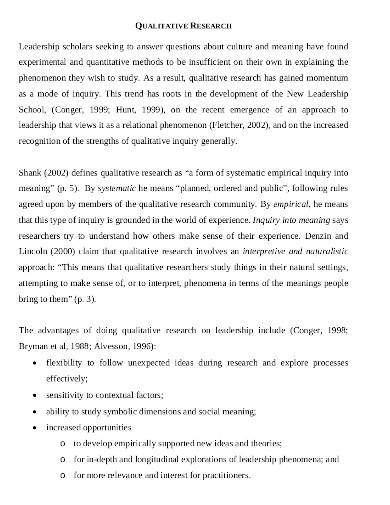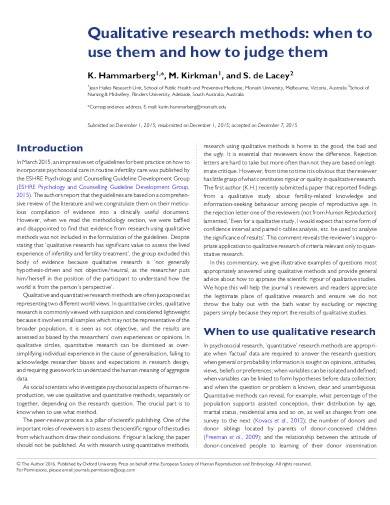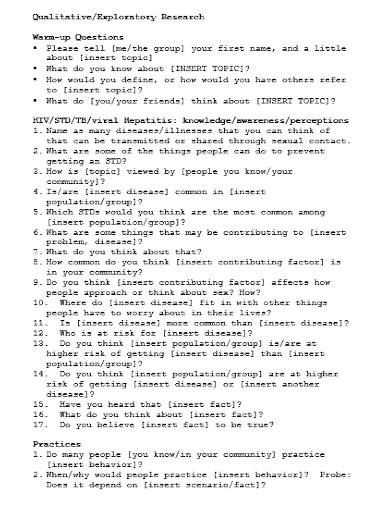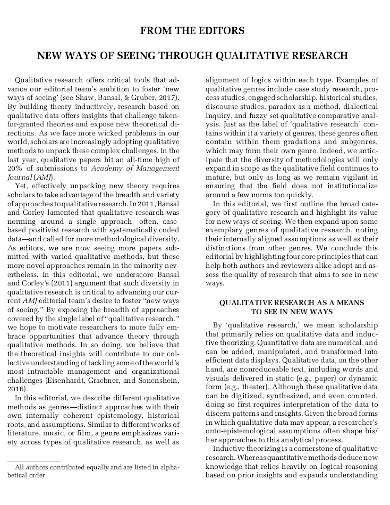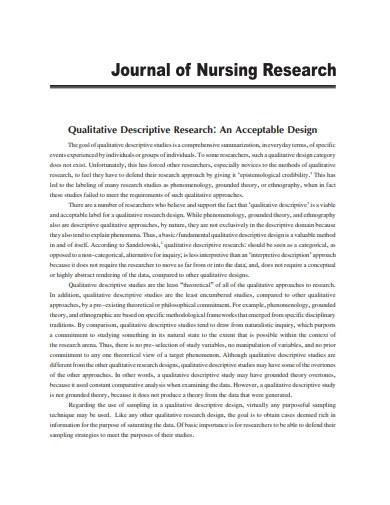In qualitative research, researchers have data collection sheet checklist through methods such as interview analysis report, focus groups, observation feedback form, and document analysis. The data collected is typically non-numerical and is analyzed using techniques such as coding, categorizing, and theming to identify patterns, themes, and relationships in the data. The purpose of qualitative research is to gain a deep understanding of the perspectives and experiences of individuals and groups. It is often used in social sciences, psychology, anthropology, and other field note sample to explore complex phenomena, generate theories, and develop insights that can inform policy samples and practice.
FREE 10+ Qualitative Research Samples & Templates in MS Word | PDF
1. Qualitative Research Template
2. Longitudinal Qualitative Research
3. Sample Qualitative Longitudinal Research
4. Qualitative Research Methods Template
5. Qualitative/Exploratory Research Template
6. Qualitative Research Survey Template
7. Qualitative & Descriptive Research Template
8. Qualitative Descriptive Research Sample
9. Simple Qualitative Research
10. Sample Qualitative Research in Business
11. Professional Qualitative Research
What is Qualitative Research?
Qualitative research is a research methodology that aims to understand the meaning and experiences of people in their natural setting. Unlike quantitative research proposal, which uses statistical analysis sample to measure and analyze data, qualitative research focuses on understanding the context and complexity of social phenomena.
How to Make a Qualitative Research?
Qualitative research has several strengths, such as its ability to generate rich and detailed data, to uncover new and unexpected findings, and to provide a more nuanced understanding of complex phenomena. However, it also has some limitations, such as a potential for subjectivity and bias, difficulty in generalizing findings to a larger population, and time-consuming and resource-intensive data collection and research gap analysis. Here is a general overview of the steps involved in conducting a qualitative research study:
Step 1- Identify Research Question
The first step is to identify a research question or topic that you want to explore. This question should be focused and clear, and it should be related to the purpose of the study.
Step 2- Choose a Research Design
The next step is to choose a research design that is appropriate for your research question. Common qualitative research designs include case study sample, ethnography, grounded theory, and phenomenology.
Step 3- Determine Sampling Strategy
Sampling strategy refers to the method of selecting participants for the study. In qualitative research, the focus is on selecting participants who can provide rich and detailed information related to the research question. The most common sampling strategies are purposeful or snowball sampling.
Step 4- Collect Data
Data collection methods in qualitative research include in-depth interviews, focus groups, observations, and document analysis. It is important to carefully plan and structure data collection, so that data is collected in a way that can effectively answer the research question.
What are the data collection methods used in qualitative research?
Data collection methods in qualitative research include in-depth interview introduction sample, focus groups, observations, and document analysis. These methods are used to gather rich and detailed data that can help answer the research question.
What are the data analysis techniques used in qualitative research?
Data analysis techniques in qualitative research include coding, categorizing, and theming. These techniques are used to identify patterns and themes in the data that can help answer the research question.
How is validity and reliability addressed in qualitative research?
Validity and reliability in qualitative research are addressed through various techniques such as member checking, peer debriefing, and triangulation. These techniques help to ensure that the data collected and analyzed is accurate and trustworthy.
Overall, qualitative research is a valuable methodology for exploring social phenomena and gaining a deep understanding of people’s experiences, perspectives, and behaviors. It can provide unique insights that quantitative research cannot, and it is often used in combination with other research methods to provide a more comprehensive understanding of a research question. It is important to take time to consider each step of the research process to ensure that the study is designed to effectively answer the research question.
Related Posts
FREE 10+ Content Validity Samples & Templates in PDF
FREE 10+ Construct Validity Samples & Templates in MS Word | PDF
FREE 10+ Code of Human Research Ethics Samples & Templates in MS Word | PDF
FREE 10+ Biography Research Report Samples and Templates in PDF
FREE 10+ System Documentation Samples & Templates in MS Word | PDF
FREE 10+ Process Document Samples & Templates in MS Word | PDF
FREE 10+ Action Research Samples & Templates in PDF
FREE 10+ Longitudinal Research Samples & Templates in PDF | MS Word
FREE 10+ Causal Research Samples & Templates in MS Word | PDF
FREE 10+ Client Discovery Samples & Templates in MS Word | PDF
FREE 10+ Null Hypothesis Samples & Templates in MS Word | PDF
FREE 9+ Product Knowledge Samples & Templates in PDF
FREE 10+ Software Documentation Samples & Templates in MS Word | PDF
FREE 10+ Exploratory Research Samples & Templates in PDF | MS Word
FREE 10+ Experimental Research Samples & Templates in MS Word | PDF

